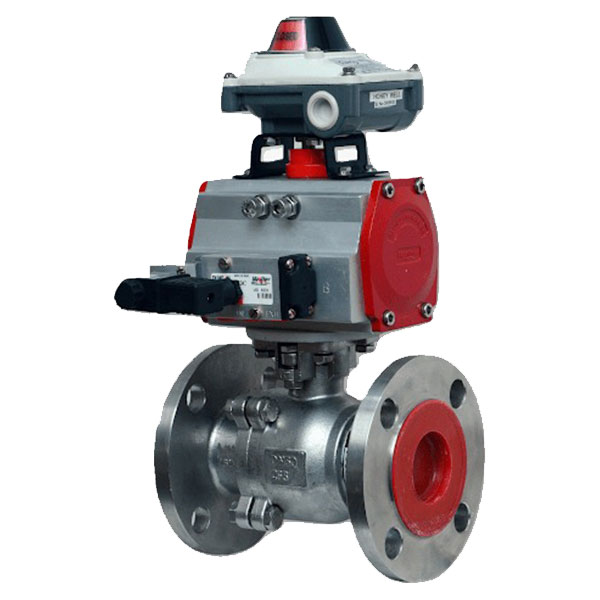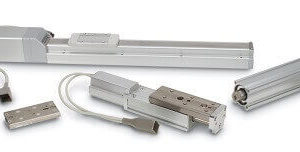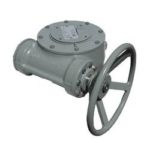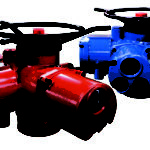
Valve Automation
Always ready to supply valve automation as per customer requirements.
Petropipe offers various types of valve automation including pneumatic, electric and hydraulic actuators along with accessories to fully automate the valves. Our wider range of automation products offers a solution for all of customers automation needs. With actuators meeting global specifications (such as CSA, ATEX, GOST, CCOE, SIL and more) and rated for a low temperature down to -50°C, we have an actuator for even your most severe service. We have the ability to conduct automation in-house as well as on-site meaning we provide our customers with a one-stop service for all valve and automation requirements. Our valve automation products work closely with our customers and provide assistance in selecting the correct valve design and components to meet the necessary requirements. We support and select manufacturers with highly skilled technicians who provide actuator sizing, CAD drawings, and schematics.
- Electric Actuators
Electric actuators are typically used in the upstream, midstream, downstream and wastewater applications and use a low or high voltage, electrical input to open or close all types of valves. Electric actuators offer distinct advantages over their pneumatic counterparts. Acceleration and speed are controlled and predictable. Multiple positions are possible with high precision and repeat ability. With no need for compressed air, infrastructure and energy costs are lower. We also offer LE which is SMC’s current line of electric actuators, designed with a focus on easy setup and operation. The LE line is available in a variety of types including: sliders, rod and guided rod, slide tables, rotary, grippers, and miniature. Accessories include actuator controllers, and gateways. Quarter-turn Actuators For optimal operations of butterfly and ball valves. The QT-series of actuators covers a range of butterfly and ball valves between DN25 and DN800. These quarter-turn actuators are robust units designed to last the lifetime of the vessel, and do not make use of limit switches. The result is a completely maintenance free operation that will provide unsurpassed level of performance, flexibility and user-friendliness.
- Multi-turn Actuators
- Manual Actuators
Manual Actuators are commonly used across all industry sectors and are typically utilized on large Valves to assist in opening and closing of the Valve. Manual Actuators are, as their name implies, powered manually by the operator but allow the Valve to be opened and closed with much less force than would typically be required. This decrease in required force creates a safe work environment when operators need to open or close a large diameter valve. We only off er Manual valve actuators often housed in enclosures that are rated by the National Electrical Manufacturers Association (NEMA), a trade organization which defines safety standards for electrical equipment.
Type 4 NEMA enclosures are rated for indoor and outdoor use and provide protection from falling dirt, rain, sleet, snow, windblown dust, splashing water and hose-directed water.
Type 4X NEMA enclosures provide protection against these same environmental variables and can also resist corrosion.
Type 7 NEMA enclosures are constructed for indoor use in hazardous locations categorized as Class I; Division 1; Groups A, B, C, or D in NFPA70, a directive from the National Fire Protection Association (NFPA).
Type 9 NEMA enclosures are constructed for indoor use in hazardous locations classified as Class II; Division 1; Groups E, F, or G in NFPA70.
Manual Valve Actuators Specification
Types: Spring Return Handles, Gear Operators, Valve Indicators and Switches.
Output torque range: 125 – 24100 Nm (92 – 17770 lb-ft)
Standard temperature range: -40 °C to +80 °C (-40 °F to +176 °F)
Options: Available with female square or key drives, Provided with pre-sized hand wheel with shear pin to prevent damage from excessive inquisitor, Optional constructions available for special conditions.
- Fluid Power Actuators
Fluid powered actuators utilize hydraulic fluid to operate the actuator and can be either self-contained or gas assisted. Fluid power actuators are typically used in upstream and midstream applications in safety-critical situations. A key feature of these valve automation products is allowing the valve to be closed completely if power is lost.In other applications if a hydraulic power unit is available, the size of the actuator compared to a pneumatic actuator will be downsized by a factor of roughly half. Petropipe is dedicated to providing heavy-duty, fluid-powered valve actuators for the oil and gas industry. Every product accounts for the most recent and stringent industry standards for safety and service life, providing users with unprecedented operating life and maintenance intervals. Types: Electro Hydraulic, High Pressure Gas, Piston, Rack & Pinion, Scotch Yoke, Spring Diaphragm, Vane, Water Hydrauli.
Positioner valve
Valve positioners are used on controlling valves where accurate and rapid control is required without error or hysterises. Positioners are generally mounted on the side-yoke or top casing of the pneumatic actuator for linear sliding stem control valves, and at/near the end-of-shaft for rotary control vales. For either basic design type, “mechanical feedback linkage” connected directly to the valve’s stem provides feedback to controller. The process controller tells the positioner to “change” position; the feedback linkage reports back to the positioner confirming that a change has occurred and gives a “sense” of the magnitude of the change in position.
Positioner valve Specification
We at Petropipe provide products according to performance such as specifications for valve positioners vary by pneumatic input signal range, maximum supply pressure, milliampere input signal range, split range, operating temperature, and output action.
• Pneumatic input signal range and maximum supply pressure are measured in pounds per square inch .
• Split ranges commonly include 4 – 10 mA and 12 – 20 mA. Two-way, three-way, and four-way splits are available.
• There are three types of output actions: direct, reversible, and field reversible.
• Direct action devices increase the output signal as the input signal increases.
• Reversible action devices decrease the output signal as the input signal increases.
• Field reversible products can be switched between direct and reversible action.
Limit Switches: A limit switch is a valve automation accessory. They can be used with various types of actuators to remotely identify whether a valve is open or closed. The limit switch is mounted on the actuator and communicates electronically with the facility’s process control system. Limit switches can help identify problems in the valve automation system before potentially dangerous and costly accidents occur.




